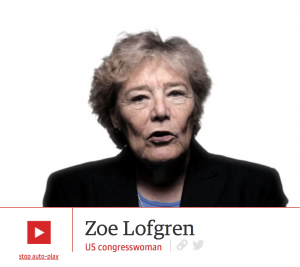Wired UK and some other sources have been blogging the Student game world that takes historic London maps into 3D space. The flythrough (YouTube) is from the winning entry to the Off the map collaboration/competiton that brought together maps from the British Library, Crytek’s CryENGINE, and the GameCity collaboration. Undergraduate teams used game technologies to model historic sites from British Library maps. The winning flythrough by Pudding Lane Productions feels like a recreation I would want to play in.
Research Records Stewardship Guidance Procedure
The University of Alberta has just passed a Research Records Stewardship Guidance Procedure which says that we “are responsible for the stewardship of the research records created, acquired, managed or preserved.” The procedure specifically says,
The Principal Investigator (PI) is responsible for the collection, maintenance, confidentiality, and secure retention of research records until such time as the University may assume responsibility for their management and preservation.
The good news is that we have excellent support in the Library for dealing with research records. We have the Education and Research Archive where we can deposit data. We also have staff in the Digital Initiatives unit of the Library who can help us develop research management plans.
I joined forces with Geoff Harder and Chuck Humphrey to give a presentation on Data Management Plans (my slides).
▶ Perseus Digital Library: Diachronic View
Perseus Digital Library Diachronic View is a YouTube video put together by Mihaela as part of a project we are working on as part of INKE. We started asking about the evolution of digital humanities interfaces which then led us to asking if there were projects that have been around long enough that their interfaces may have changed. This led us to the Perseus project which existed before the web. Using the Internet Archive and other sources we tried to reconstitute a history of major versions of the interface from the first HyperCard interface. We then created this video to show the evolution. We are now collaborating with Perseus to study the evolution of their interface, to preserve key screens, and to improve the interface for mobile devices.
NSA files decoded: Edward Snowden’s surveillance revelations explained

The Guardian just published a wonderful essay with embedded video on the NSA files decoded: Edward Snowden’s surveillance revelations explained. The essay provides an overview of what the Snowden revelations tell us about the NSA and its collection of metadata. The essay has short video clips embedded from interviews that play as you scroll down. There are panels with redacted slides from the NSA and there are panels with documents. The essay has 6 parts ending with “What Now?” which speculates on how the courts or Congress will respond.
Finding Life After Academia — and Not Feeling Bad About It
The New York Times has a good story on Finding Life After Academia — and Not Feeling Bad About It. The beginning of the article goes over the usual depressing factoids like
According to a 2011 National Science Foundation survey, 35 percent of doctorate recipients — and 43 percent of those in the humanities — had no commitment for employment at the time of completion. Fewer than half of Ph.D.’s are expected to land tenure-track jobs.
The articles then shifts to moves to try to define careers beyond the tenure track job for Ph.D.’s. For example they mention Katina Rogers Humanities Unbound: Supporting Careers and Scholarship Beyond the Tenure Track (PDF). This report from the Scholarly Communication Institute concludes with,
Equipping graduate students with the skills and literacies needed for 21st century scholarly work—from technical fluency to an understanding of organizational structures—is critical to ensuring continued rigorous and creative research and other work products. Remaining wedded to outmoded systems, including a model of apprenticeship in higher education that reinforces the false assumption that professorship is the only meaningful career for humanities doctoral recipients, does a tremendous disservice to all individuals and organizations that benefit from humanistic perspectives. (p. 21)
The article also mentions a white paper from Stanford on the The Future of the Humanities Ph.D.at Stanford that argues for reduced time to completion and “Redesigning graduate curricula to prepare PhD’s for a diverse array of meaningful, socially productive and personally rewarding careers within and outside the academy.” (p. 1) Finally they mention the Praxis Network which is focused on rethinking graduate training.
Pica Pic: retro handheld games collection

Eric just sent me the link to a fabulous site called Pica Pic | retro handheld games collection. The site lets you browse and play retro hand-held games like Nintendo Game & Watch toys and imitations. What is particularly impressive is that you play right on high-quality images of the toys.
Arts in 60 Seconds: Research Lectures
The University of Alberta has put together a set of short (60 second) lectures by faculty on what they do. See Arts in 60 seconds and ignore my one.
Supporting Digital Scholarship
The Tri-Council Agencies (Research councils of Canada) and selected other institutions (going under the rubric TC3+) have released an important Consultation Document titled Capitalizing on Big Data: Toward a Policy Framework for Advancing Digital Scholarship in Canada. You can see a summary blog entry from the CommerceLab, How big data is reshaping the future of digital scholarship in Canada. The document suggest that we have many of the components of a “well-functioning digital infrastructure ecosystem for research and innovation”, but that these are not coordinated and Canada is not keeping up. They propose three initiatives:
- Establishing a Culture of Stewardship
- Coordination of Stakeholder Engagement
- Developing Capacity and Future Funding Parameters
The first initiative is about research data management and something we have been working on the digital humanities for some time. It is great to see a call from our funding agencies.
Demographics in Japan
How are Japanese demographics, attitudes towards sexuality and marriage, and gaming connected?
I decided I should check my assumptions about an aging Japan and looked around for some data and articles. One interesting study I came across, from Goldman Sachs, is titled Womenomics 3.0: The Time is Now (PDF). The report has information about birth rates and dependency ratios. They expect there to be a 2:1 ration of workers to dependents (children under 15 and the elderly over 65) by 2050. The report calls for initiatives that encourage more women to join (or stay in) the workforce.
On the subject on attitudes towards marriage and sexuality and how those are changing in Japan, I came across an interesting article in the Guardian titled, Why have young people in Japan stopped having sex? Once you get past the human-interest sex frame there is a nice summary of some of the statistics and issues. The article suggests that the declining interest in getting married, having relationships and having children is not just a matter of women who don’t want to give up their careers, but a larger trend amongst men and women. They suggest it may be occurring in other countries too, especially those hit by the recession.
The Guardian article led me to a report by Eberstadt titled Japan Shrinks about the implications of the drop in fertility rates. The author makes an intriguing aside to the effect that, “Remarkably enough, there is a near perfect correlation between the demise of arranged marriage in Japan and the decline in postwar Japanese fertility.” More importantly he lists some of the possible side effects of the changing demographics. For example, young workers leaving Japan in order to escape the burden of supporting the elderly.
What does all this have to do with games? Well, the Guardian article and others make a connection between the attitudes to relationships and the availability of virtual relationships. Eberstadt spells out a possible connection when he writes:
- In a recent government survey, one-third of boys ages 16 to 19 described themselves as uninterested in or positively averse to sexual intimacy.
- Young Japanese men are, however, clearly very interested in video games and the Internet: In 2009, a 27-year-old Japanese man made history by “marrying” a female video game character’s avatar while thousands watched online.
- Japanese researchers are pioneering the development of attractive, lifelike androids. Earlier this year, a persuasively realistic humanoid called Geminoid F was displayed in a department store window, appearing to wait for a friend.
Japanese Game Culture Blogs
This term I’m teaching a course on Understanding Japanese Game Culture and I’ve just discovered (again) that my students know more than me. This is a graduate version of the seminar I taught this summer at Ritsumeikan University for University of Alberta undergraduates. For the graduate version I asked students to keep a blog with responses to the readings and as I checked their blogs this week I realized how interesting their interventions are. Many of their entries expand on issues from the readings in ways that remind me (once more) how much more learning takes place in a seminar where everyone contributes than in a instructor-driven course. Here are the links to their blogs. Enjoy:
- Mimi Okabe gyaru-taku.blogspot.ca/
- Jeremie Gagnon japongagnon.blogspot.ca
- Jared Bieby Japanese Game Culture
- Sonja Sapach http://sonjasapach.wordpress.com/
- Brett Nisbet http://bnisbet.blogspot.ca
- Justin Houle http://japanesegamingculture.blogspot.ca/
- Daniel McKechnie http://agovernmentman.tumblr.com/tagged/huco-617
- John Montague http://montaguejapanesegames.blogspot.ca/
- Aiden In http://aidenin.wordpress.com
- Domini Gee http://sleep-is-god.tumblr.com/tagged/huco617
- Alexander Smit-Keding http://ahuco617blog.blogspot.ca/